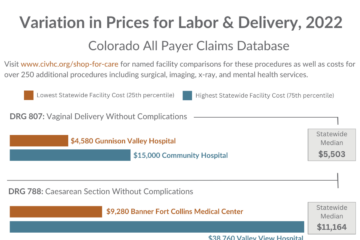The way people access and utilize health care varies across age, location, race, and gender. Recognizing the recent men’s health awareness month, we investigated Colorado All Payer Claims Database (CO APCD) data to identify how men in Colorado access health care.
In November 2021, CIVHC released an updated Community Dashboard with county and regional information to help communities understand how different aspects of health care – including cost of services, access to care, and use of preventative services and treatment – vary across Colorado. The analysis includes several measures that break down utilization and quality of care by age and gender.
It is important to note that while CIVHC does collect claims information for people who do not identify as male or female, because of the detailed level of reporting at the county, age and payer level that results in low volume and potential personal health information risk, we currently do not have information broken out for nonbinary persons.
Utilization
Broadly, men utilize health care services less than women, and younger men tend to visit the doctor less frequently than older men. Nearly half of all men ages 18-34 who have health insurance coverage do not use their health care, compared to around 30% of men ages 35-64, and 10% of men age over 65. In contrast, women use their health insurance coverage much more frequently, especially between the ages of 18-34.
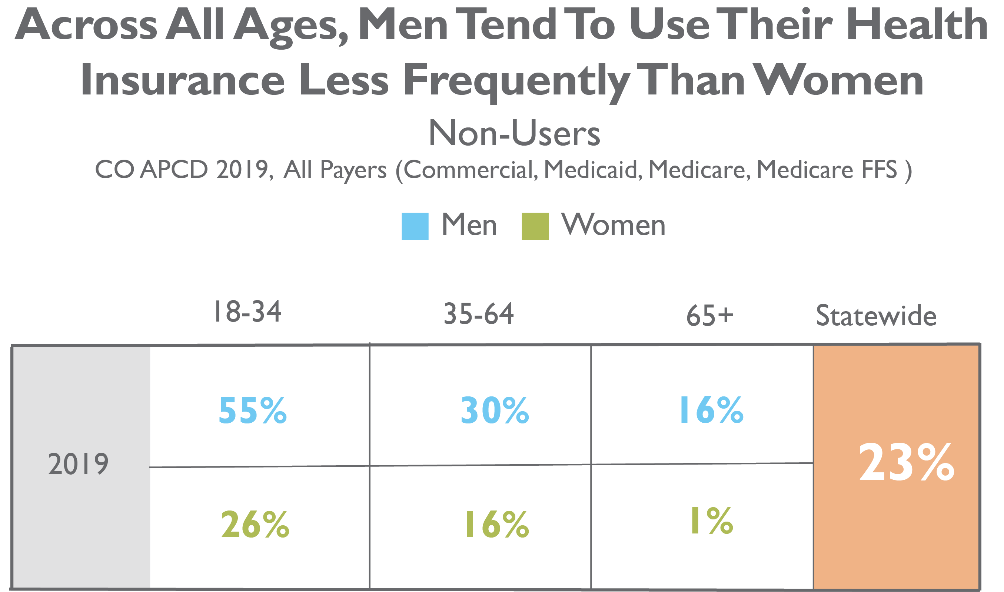
To see the full data set for non-users, click here to request to download the Excel data.
When evaluating people with health insurance coverage who only accessed services for preventive or minor procedures, men and women tend to access services at a similar rate. While more men with coverage are not visiting the doctor regularly, those who use their coverage tend to use it at roughly the same rate as healthy women across the state.
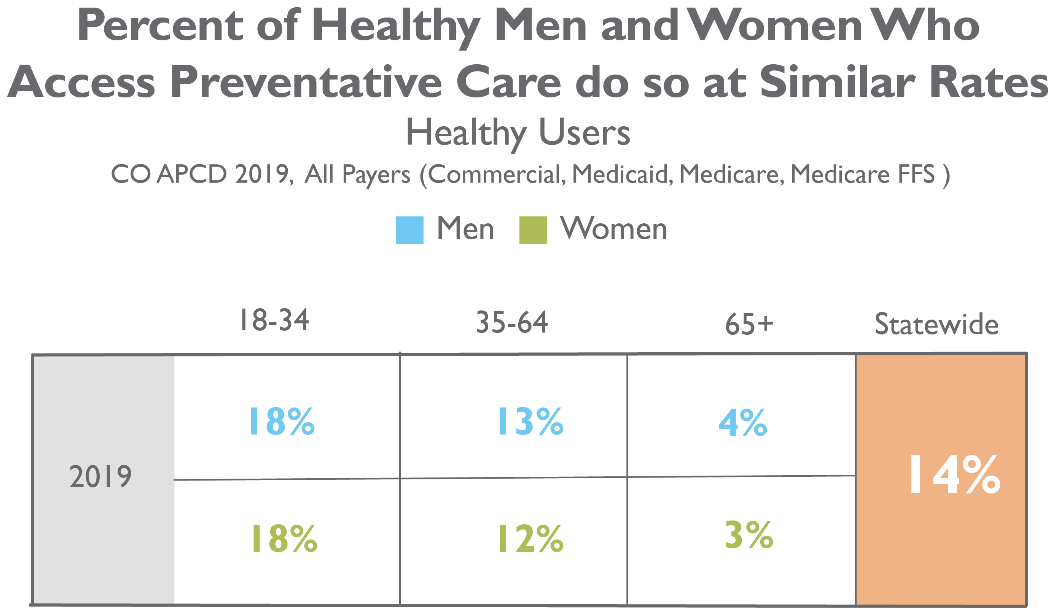
To see the full data set for healthy users, please click here to request to download the Excel file.
It is important to note these measures reflect only those who are accessing care for minor or preventive care, so it does not represent how often men or women may be utilizing care for chronic conditions.
Quality of Care
While utilization trends overall are lower, quality of care is similar among men and women, and trends are improving steadily for both genders. CIVHC’s Community Dashboard tracks nationally endorsed quality measures , including breast cancer screenings, cervical cancer screenings, mental health Emergency Department (ED) visit follow-ups, and Diabetes HbA1c testing.
Diabetes HbA1c testing, a strong indicator of the quality of care for a chronic disease, shows similar results and steady improvement for both males and females. This is a positive sign that men diagnosed with chronic conditions are accessing health care and receiving the necessary care in return.
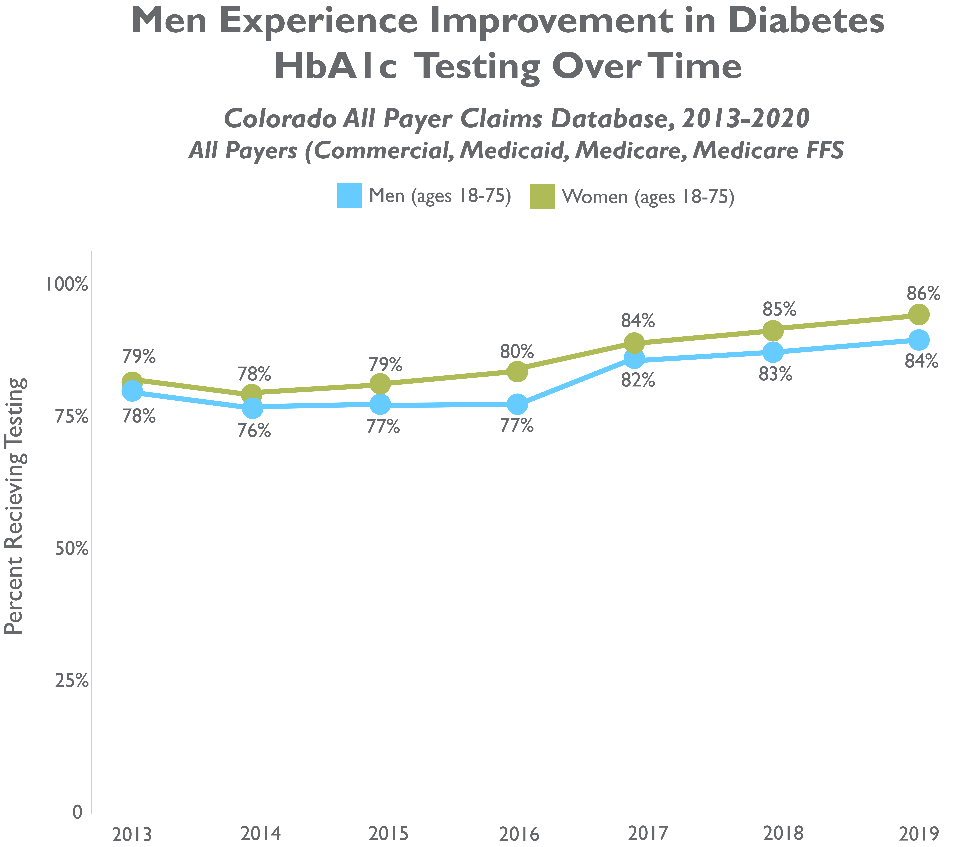
Similarly, while men have tended to receive follow-up for mental health ED visits at lower rates, men have experienced improvement at a similar rate to women. From 2013-2019, the number of men receiving mental health ED visit follow-ups improved by 49%. It is frequently more difficult for men to receive mental health services, partially because men typically are more resistant to mental health care, so this is another encouraging sign for the quality of care in mental health.
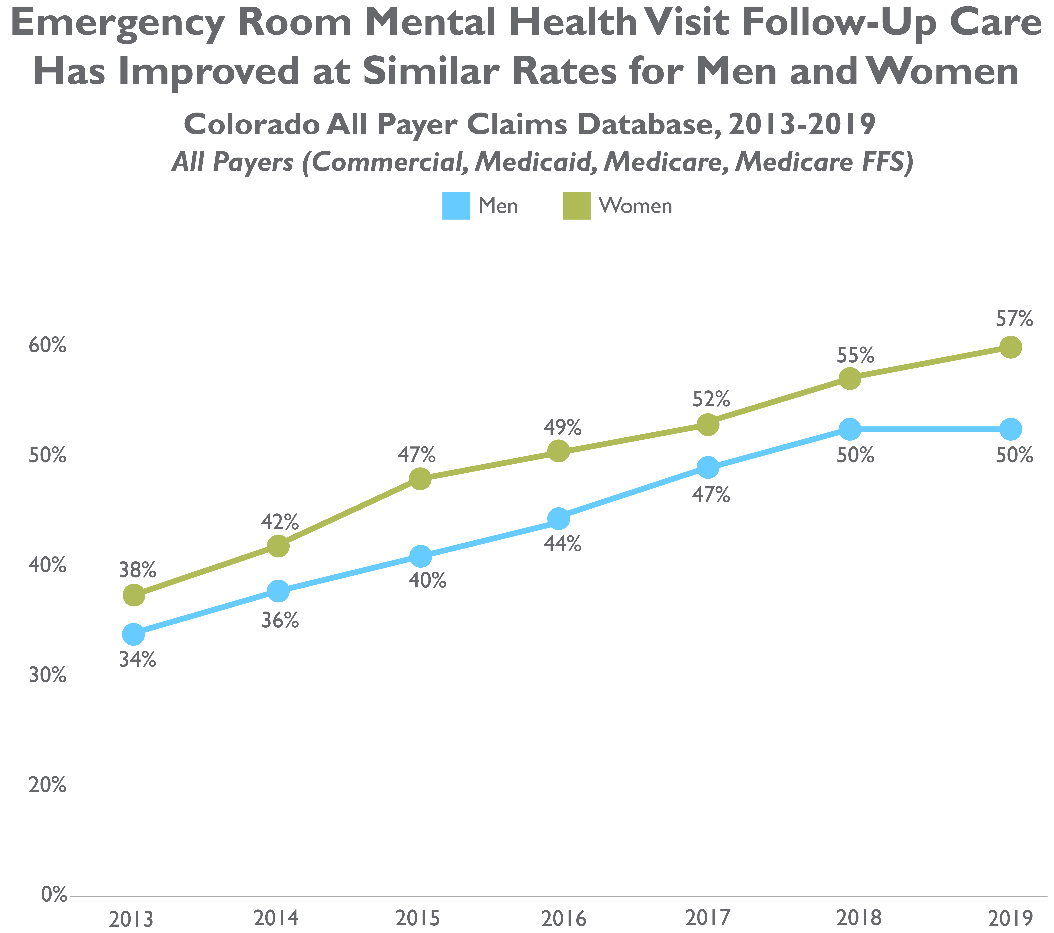
It is apparent that trends are improving, but even so, some men and women are not still not receiving testing as recommended, leaving opportunities for further improvement. Using this information at the county and state level can help communities and the state at large improve the health of all Coloradans.

